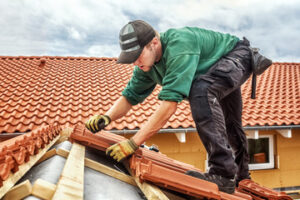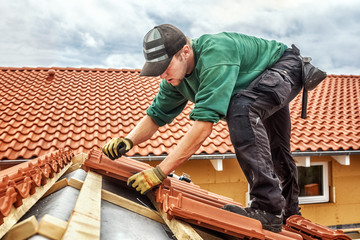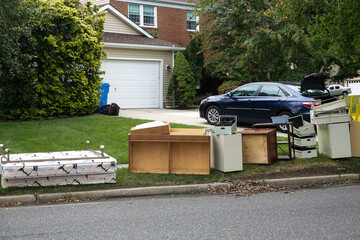Emergency Roof Repair Las Vegas NV becomes essential when sudden damage occurs. Harsh weather, fallen debris, and aging materials can create unexpected issues. Acting quickly prevents further structural damage. Immediate action protects both the interior and exterior of the building.
A leaking roof is a common emergency that demands swift attention. Water intrusion damages ceilings, walls, and personal property. Mold and mildew can develop if the moisture is not controlled. Prompt repair reduces long-term damage and health risks.
Storm damage often results in missing or damaged shingles. High winds and heavy rain create pressure on roofing materials. Securing loose shingles prevents further detachment. A quick fix protects against interior leaks and insulation loss.
Tree branches and heavy objects can puncture roofing materials. Structural weakness increases the risk of collapse. Removing debris and securing the damaged area prevents additional harm. Temporary patching can provide short-term protection.
Cracked or damaged flashing leads to water penetration. Flashing directs water away from roof joints and edges. Repairing damaged flashing prevents moisture seepage. Sealing cracks restores proper water flow and protection.
Ice dams cause significant roofing problems during colder months. Freezing and thawing cycles create pressure on roofing materials. Removing ice buildup prevents water from backing under shingles. Proper insulation reduces the likelihood of future ice dam formation.
Emergency tarping offers a temporary solution for roof damage. Heavy-duty tarps cover exposed areas and prevent water intrusion. Securing the tarp tightly prevents wind displacement. Professional inspection ensures proper long-term repair.
Interior water stains signal hidden roof damage. Discolored ceilings and peeling paint often result from slow leaks. Early detection prevents widespread structural damage. Quick sealing and patching address the source of the problem.
Roofing materials degrade over time due to environmental exposure. UV rays, moisture, and temperature fluctuations weaken shingles. Routine maintenance extends the lifespan of the roof. Addressing minor issues early prevents costly repairs.
Clogged gutters contribute to roof damage during heavy rain. Blocked water overflow damages roofing materials and fascia. Clearing gutters prevents standing water and ice formation. Regular cleaning reduces the risk of future damage.
Ventilation issues affect roof health and performance. Trapped moisture beneath the roof deck causes material decay. Proper airflow reduces heat buildup and moisture retention. Installing vents restores balanced temperature and humidity levels.
Pest infestations create roof damage from nesting and burrowing. Birds, rodents, and insects weaken roofing materials. Removing pests and sealing entry points prevents further damage. Professional intervention ensures complete pest removal.
Wind uplift creates pressure beneath roofing materials. Improper installation or weakened adhesives increase the risk of detachment. Reinforcing the roof deck improves wind resistance. Securing loose materials prevents long-term damage.
Sagging roofs indicate structural weakness and moisture retention. Excess weight from water or debris creates downward pressure. Reinforcing support beams prevents collapse. Professional evaluation identifies the underlying cause of sagging.
Damaged skylights compromise roof integrity. Improper sealing and cracked glass allow water intrusion. Resealing the skylight frame prevents leaks. Replacing broken glass restores insulation and weather protection.
Fascia and soffit damage exposes the roof edge to moisture. Rotted wood and peeling paint indicate water penetration. Replacing damaged sections restores structural integrity. Proper sealing prevents future deterioration.
Emergency roof inspections identify hidden damage. Trained professionals assess structural weakness and moisture retention. Early detection reduces repair costs. A thorough inspection ensures long-term roof stability.
Chimney flashing failure allows water intrusion at the roof joint. Cracked or lifted flashing creates gaps for moisture entry. Sealing the flashing prevents leaks and insulation loss. Regular maintenance ensures secure attachment.
Heavy snow accumulation increases roof load and structural pressure. Melting snow creates water runoff beneath shingles. Removing excess snow prevents water pooling and ice formation. Professional snow removal reduces roof strain.
Roof membrane damage leads to insulation loss and water seepage. Punctures and blisters compromise waterproofing. Repairing the membrane restores energy efficiency. Proper sealing enhances long-term protection.
Roof edge damage exposes underlying materials to environmental elements. Improper sealing increases wind and water penetration. Reinforcing the edge prevents material lifting. Professional sealing protects against future exposure.
Moss and algae growth weaken roofing materials. Moisture retention from organic buildup accelerates decay. Removing moss and treating the surface prevents regrowth. Proper ventilation reduces moisture accumulation.
Improper roof slope creates drainage issues. Standing water increases material decay and leak risk. Adjusting the slope improves water runoff. Professional correction ensures proper drainage.
Roof deck damage weakens structural integrity. Rotting wood and water stains signal hidden issues. Reinforcing the deck improves load capacity. Professional repair restores strength and durability.
Metal roofing corrosion leads to leaks and material weakening. Rust forms from prolonged moisture exposure. Removing rust and applying protective coating prevents further damage. Professional treatment enhances material lifespan.
Hail damage creates punctures and surface erosion. Impact pressure weakens shingle adhesion and underlayment. Replacing damaged shingles restores protective barriers. Professional inspection ensures proper repair.
Seam separation in flat roofs causes water pooling. Improper adhesive application or material aging creates gaps. Resealing seams prevents moisture penetration. Professional sealing improves long-term performance.
Roof blistering results from trapped moisture beneath the surface. Expanding air pockets weaken material adhesion. Removing blisters and resealing the surface restores strength. Proper ventilation reduces future blister formation.
Solar panel installation increases roof load and attachment points. Improper mounting creates stress on roofing materials. Reinforcing attachment points prevents damage. Professional installation ensures proper weight distribution.
Emergency ventilation repair reduces trapped heat and moisture. Blocked vents create insulation failure and material decay. Clearing vents restores airflow and reduces roof strain. Professional adjustment ensures balanced ventilation.
Flat roof ponding creates pressure on the roof membrane. Standing water accelerates material breakdown. Installing proper drainage reduces water retention. Professional leveling restores roof balance.
Skylight flashing damage creates interior leaks. Cracked or missing flashing exposes the frame to moisture. Replacing the flashing prevents water intrusion. Proper sealing ensures weather resistance.
Thermal expansion and contraction stress roofing materials. Temperature fluctuations create cracks and separations. Installing flexible materials reduces expansion pressure. Proper insulation improves temperature stability.
Emergency roof repair requires quick assessment and action. Identifying the source of damage prevents further deterioration. Temporary solutions protect against immediate weather exposure. Professional repair ensures long-term structural integrity.
Roofing material compatibility impacts repair success. Mixing different materials weakens structural bonds. Matching replacement materials maintains consistent performance. Professional evaluation ensures proper material selection.
Seasonal changes affect roof health and performance. Extreme heat, cold, and moisture weaken materials. Routine inspections identify seasonal damage. Proper maintenance ensures year-round protection.
Home insurance coverage impacts repair costs and timelines. Filing accurate claims ensures proper compensation. Documenting damage supports claim approval. Professional assistance improves claim success rates.
Emergency roof repair minimizes long-term damage and costs. Prompt action protects interior and exterior structures. Professional inspection ensures thorough assessment. Proper repair restores roof strength and durability.



